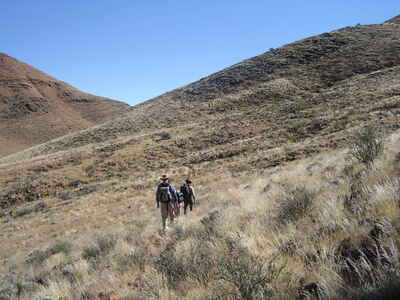About Tok Tokkie Trails
What an experience! Although not really a 'lodge' or a 'camp' – Tok Tokkie Trails run a two-night/three-day ...
... walking trail in the NamibRand Nature Reserve. Visitors stay on the Tok Tokkie trail in the reserve for three days, whilst they explore the unique desert landscape on a guided walking trail.
Tok Tokkie Trails offers an experience rather than just a place to stay. We thought it was excellent, very close to nature, with knowledgeable and affable guides. Sleeping out under the stars isn't for everyone – but if you like the idea, then these trips are magical!
Accommodation
8 travellers maximum
Children
Best for 14+
Open
15 Feb to 15 Dec
Activities

Guided walking safari

Private activities
Traveller reviews of Tok Tokkie Trails
42 real, un-edited reviews from Expert Africa's travellers.
Arrived 24 Sep 2024, 2 nights
"Tok Tokkie Trails review"
Overall rating: Excellent
Arrived 17 Aug 2024, 2 nights
"Tok Tokkie Trails review"
Overall rating: Excellent
Arrived 26 Jul 2024, 2 nights
"Tok Tokkie Trails review"
Overall rating: Excellent
Arrived 6 May 2024, 2 nights
"Tok Tokkie Trails review"
Overall rating: Excellent
Arrived 29 Oct 2022, 2 nights
"Tok Tokkie Trails highly recommended"
Overall rating: Excellent
Arrived 9 Oct 2022, 2 nights
"Tok Tokkie Trails review"
Overall rating: Excellent
Arrived 1 Sep 2022, 2 nights
"Tok Tokkie Trail - superb!"
Overall rating: Excellent
Arrived 1 Sep 2021, 2 nights
"Tok Tokkie Trails review"
Overall rating: Good
Arrived 7 Oct 2019, 2 nights
"Superb nights under the stars"
Overall rating: Excellent
Arrived 23 May 2019, 2 nights
"Tok Tokkie Trails review"
Overall rating: Excellent
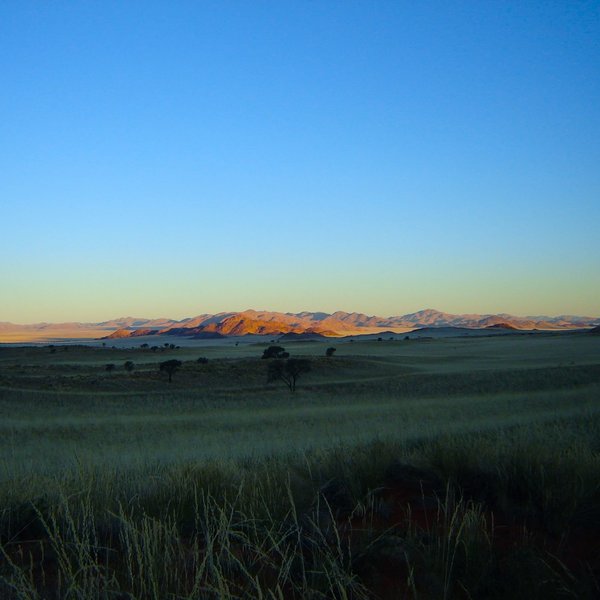
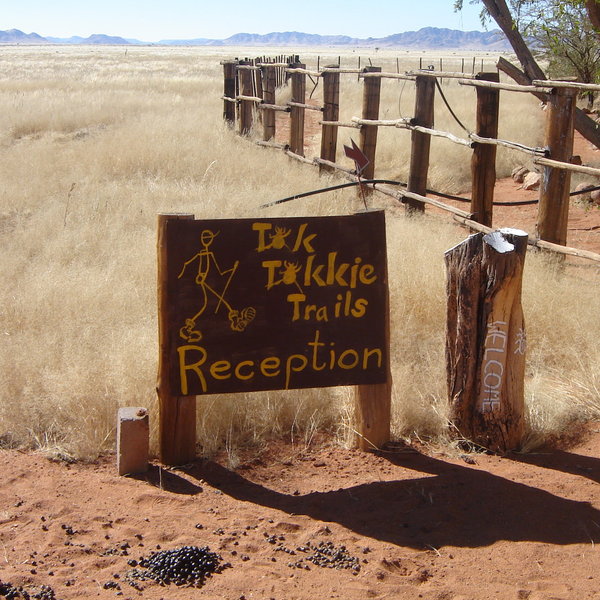
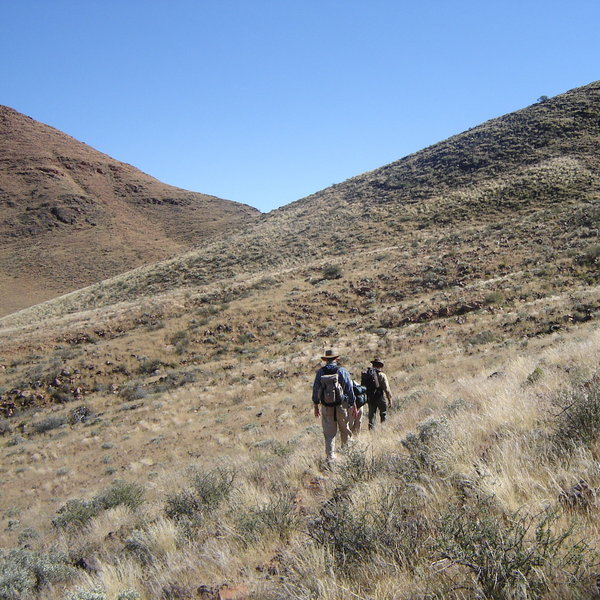
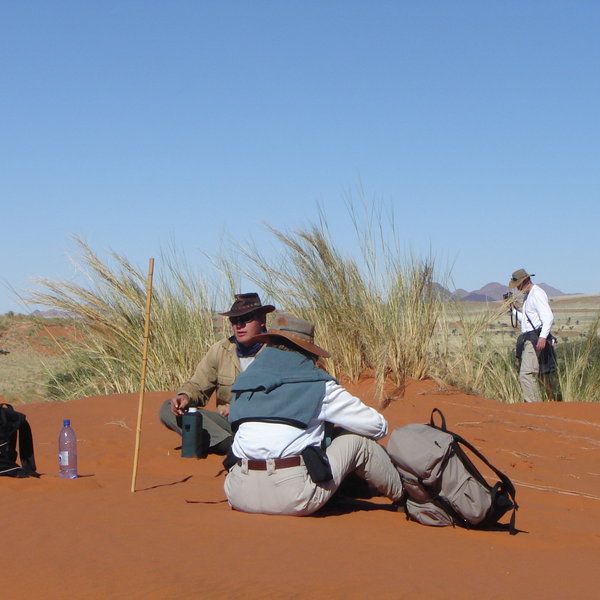

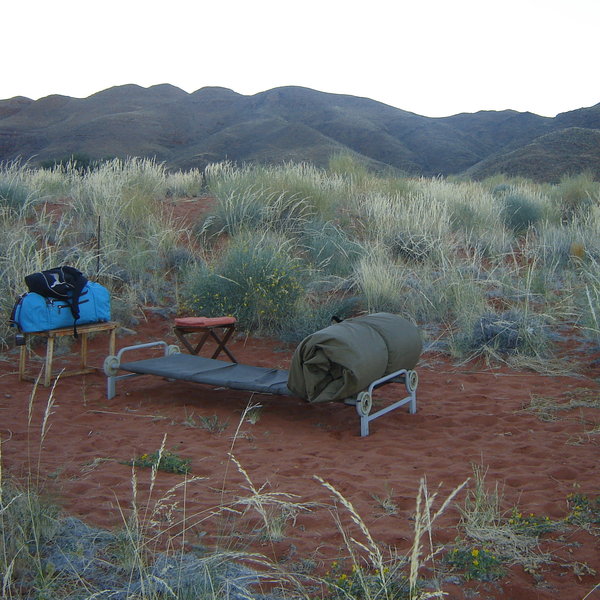
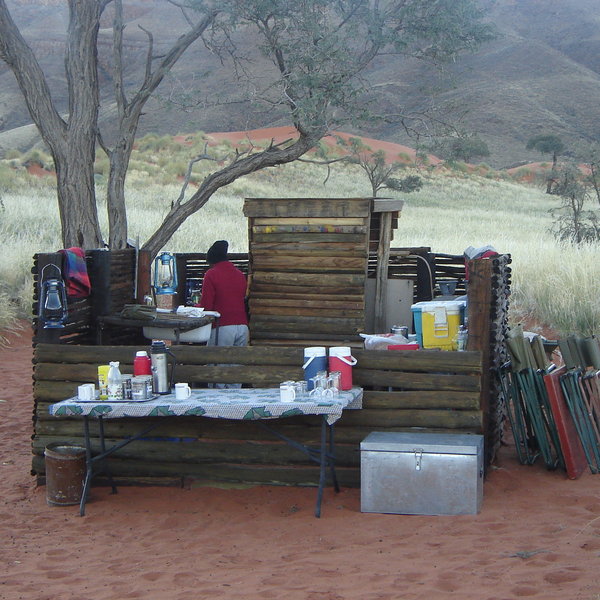
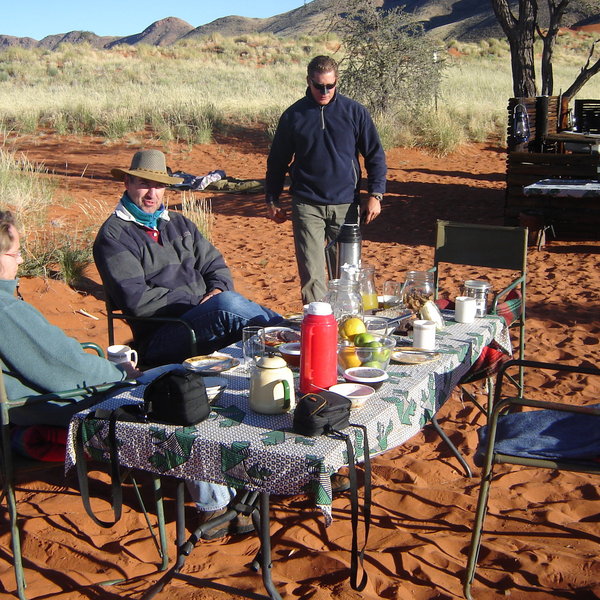
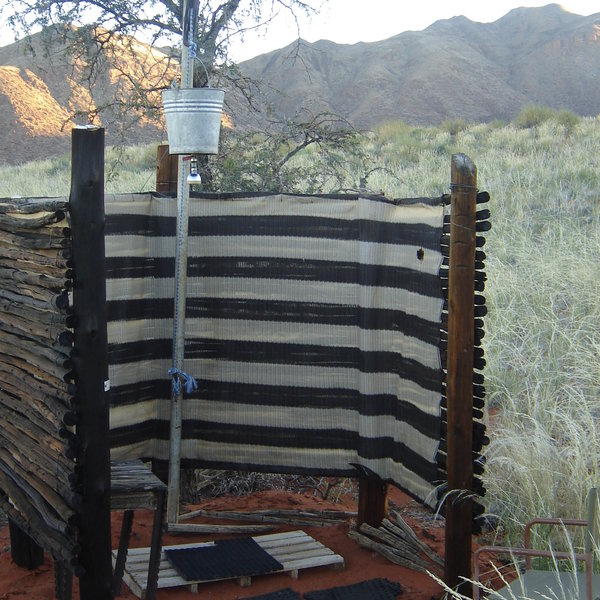
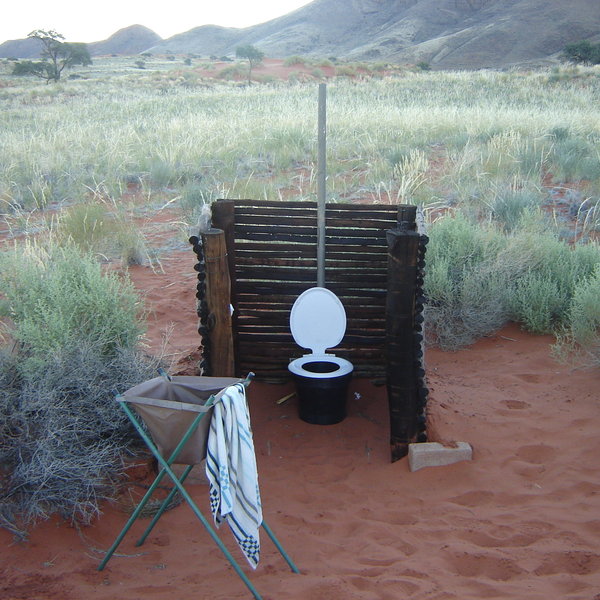
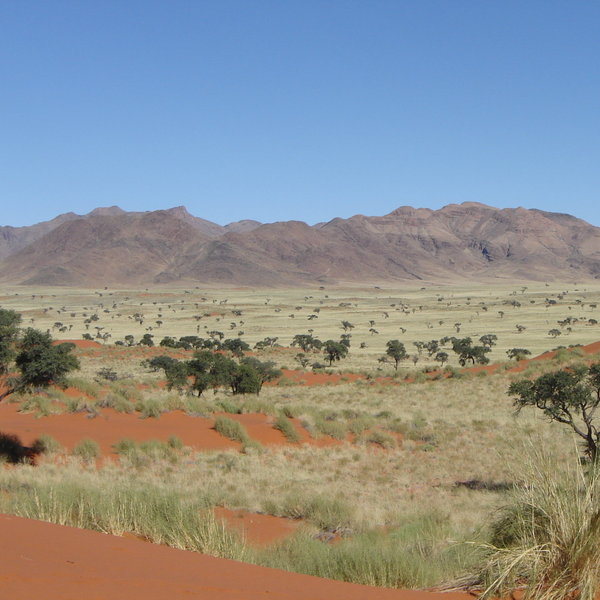
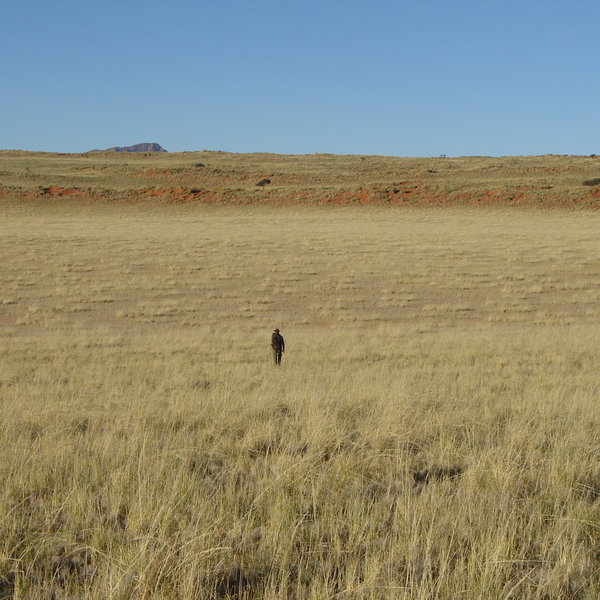
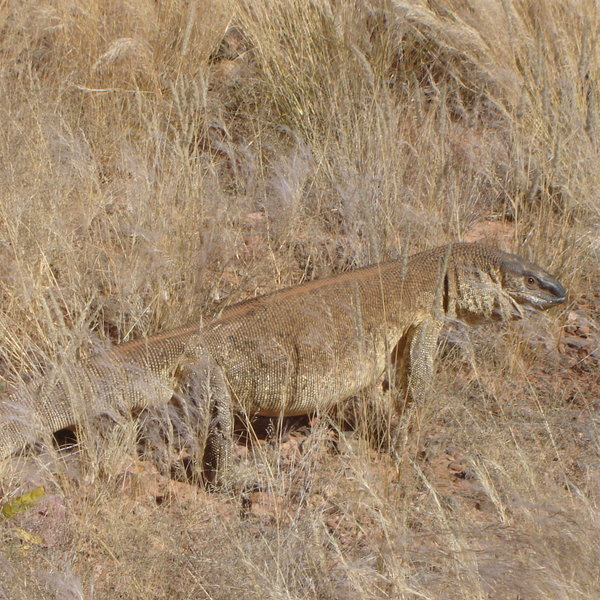
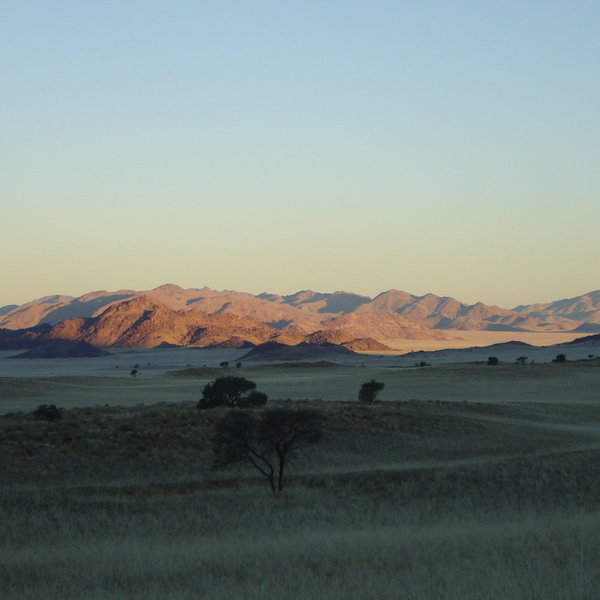
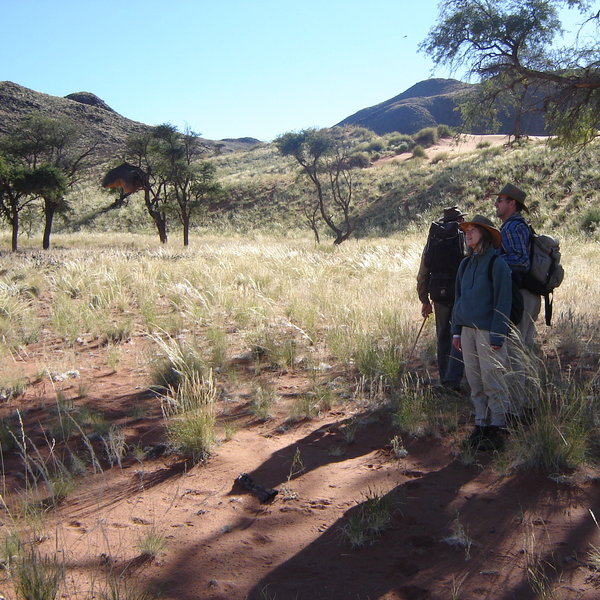
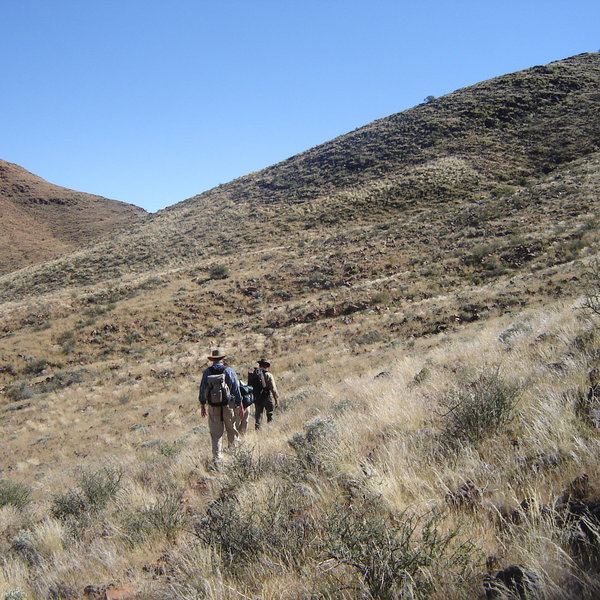
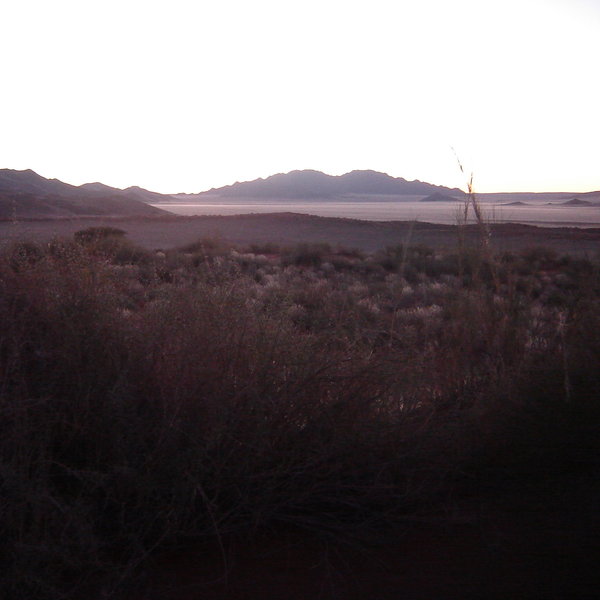
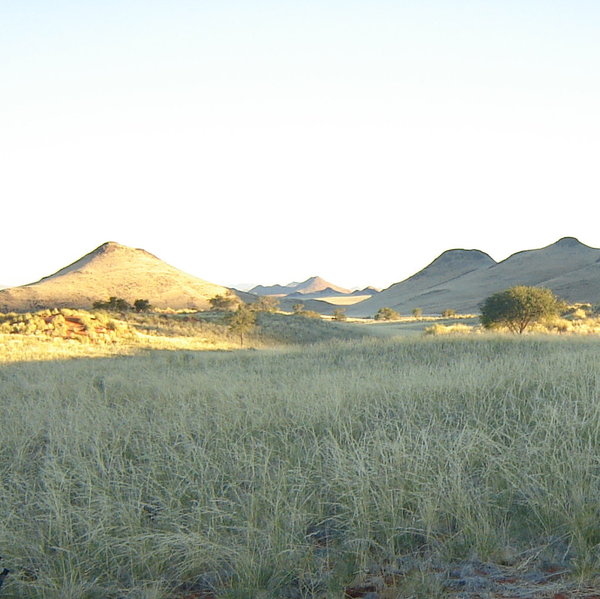
Expert Africa's gallery
When we travel we take lots of photos ourselves to give you a real and un-edited view of the safaris. See our 29 pictures and 1 videos of Tok Tokkie Trails to get the candid view.
View gallerySafaris visiting Tok Tokkie Trails
Just ideas, we'll always tailor-make a trip for you
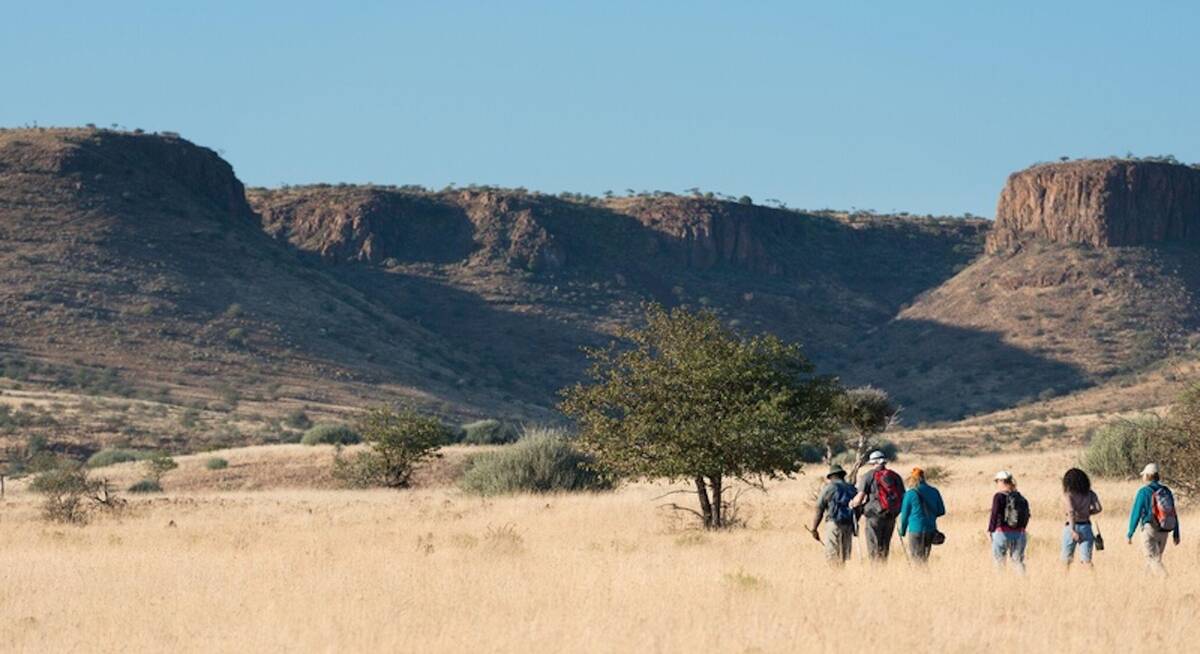
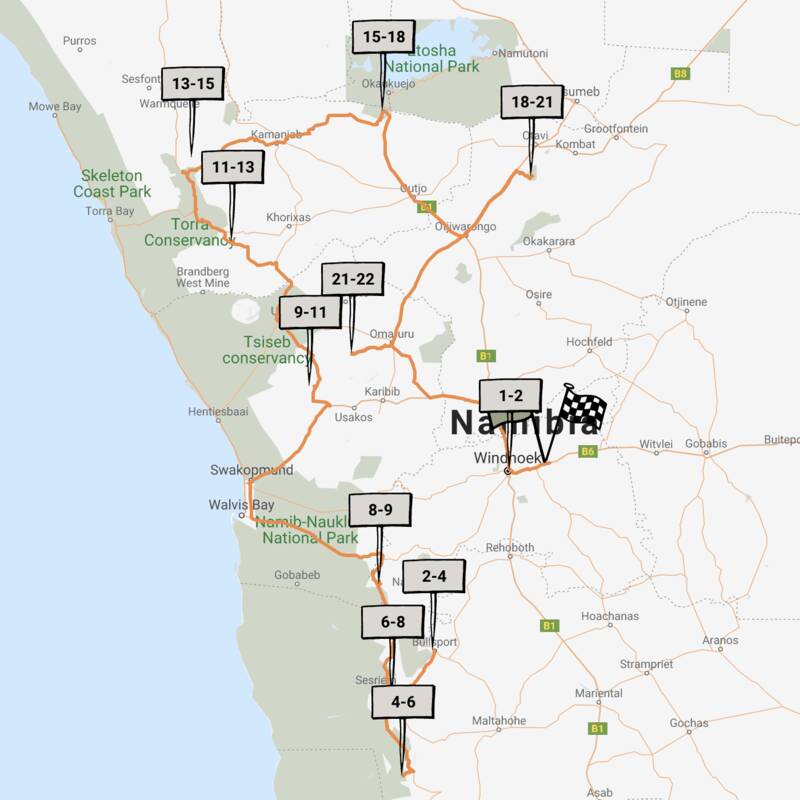
Chongololo Self-drive Safari
21 days • 11 locations • 1 country
WINDHOEK AIRPORT TO WINDHOEK AIRPORT
This self-drive safari focuses on the best walking experiences in Namibia. Get your boots ready for the apricot dunes of the Namib Desert and the ancient hills of Damaraland.
Visiting Central Highlands, Namib-Naukluft and 4 other areas
US$9,260 - US$10,220 per person
Tok Tokkie Trails: Our full report
What an experience! Although not really a 'lodge' or a 'camp' – Tok Tokkie Trails run a two-night/three-day ...
... walking trail in the NamibRand Nature Reserve. Visitors stay on the Tok Tokkie trail in the reserve for three days, whilst they explore the unique desert landscape on a guided walking trail.
The two overnight camps used on Tok Tokkie Trails are both virtually identical – even though they stand in different locations.
Each camp has a simple open-air kitchen, with a solid wooden screen around it, a table and a fridge. Excellent three-course meals are served here with good wine, with the guests and guide sitting around the table to chat. Many of the meals are pre-prepared at the farmhouse, and brought out to the camps on the afternoon when they're due to be served.
Tok Tokkie team have obviously become very practised at this over the years, as the food that we had was excellent, and tasted as if it had been freshly cooked. But then … nothing beats having dinner in the middle of the desert under a star-filled sky!
We visited in May 2008, when it was cool in the evening, and so the Tok Tokkie team supplied us with thick ponchos to wear around camp, and to dinner. After eating and chatting, everyone retires to their 'room', which is simply a corner of desert, with sand for a floor, no walls and the sky for a ceiling. These are dotted around amongst the dunes for privacy, usually in slight clearings. Here you'll find a washbasin, a bedside mat, several canvas chairs, and either one or two camp 'stretcher' beds – for a single or a double 'room'.
Each bed roll at a Tok Tokkie camp contains a thick foam mattress with a cotton cover, a covered duvet, and a proper pillow. All of these are neatly rolled up inside a thick, water-proof canvas outer – a bed roll. When unrolled on a stretcher-bed (a 'camp' bed) this becomes a comfortable and zip-able little bed that remains warm inside even when it's cold outside.
From around June to the start of September – travellers should expect daytime temperatures to be fine and warm, but at night it can often drop below freezing. Hence you'll be particularly glad of the hot-water bottles that the Tok Tokkie team usually place in the beds whilst you're having dinner.
Clean towels are also provided by the Tok Tokkie team. Lanterns are placed beside each 'room' at night to allow some light – although if the stars or moon is out then these are often superfluous.
For most trips (which normally take a maximum of eight guests) there is one long-drop toilet in the camp – which is screened off and consists of a wooden box with a proper toilet seat on the top, and a lid. In this very arid climate, this seemed very clean to us – and beside, the view from the toilet is so amazing that going there seems a real pleasure.
There's also a bucket shower for each Tok Tokkie Trails camp. This is filled with hot water on request and has a table, a chair and a mirror next to it. Obviously it's also screened off from the camp for privacy – and it, too, has great views!
Note that Tok Tokkie Trails closes from December to February, because the desert is then too hot to walk in comfortably or safely.
The NamibRand Nature Reserve, where Tok Tokkie Trails takes place, is one of the largest private nature reserves in Africa, covering about 2,100km². Its different landscapes vary from red sand dunes, to sand-and-gravel plains and imposing mountains – and these make this a spectacular area to visit.
Walking during Tok Tokkie Trails is at a comfortable pace, never strenuous. Regular breaks are taken and the guide will often stop to explain about the fauna and flora or anything interested that you may have come across. The routes lead through rough terrain and over sand dunes and sometime are very hard so good comfortable hiking shoes are recommended. A walking stick would be handy too.
Tok Tokkie Trails usually starts at around 12 noon, when you meet at the old farmhouse and normally sit down with your guide for a light lunch. Backpacks with water bottles and a cup with raisins are provided but you are welcome to use your own backpack. You carry only your camera and water whilst your main luggage will be transferred to your overnight camps.
You set off around 15:00 on a short scenic drive to the starting point of the trail and from there it is a short walk, about two hours to the first overnight camp amongst the sand dunes. By the time you reach your first Tok Tokkie camp, the camp assistants have already set up camp and all you have to do is relax, watch the sunset with a cold drink, have dinner and watch the stars. Hot water bottles are provided during the winter.
On the next day, you will typically set off just after breakfast, after being woken up at sunrise with a cup of tea/coffee and hot water to wash. You usually walk for the good part of the morning with a coffee/tea break sometime mid-morning.
You will arrive at a shady picnic spot during the heat of the day, where you enjoy your lunch, fill up water bottles and have a siesta for a few hours. After that walking continues to the second overnight camp – which is basically the same as the first camp although in a different location.
On the third day of the Tok Tokkie Trail, you'll again wake early to a hot drink, and water for washing. After breakfast you'll set off around 8.00, and continue at the usual, moderate 'Tok Tokkie' pace back to the farmhouse from which the trail started – arriving around 10.30-11.00. Here you can have a drink, a chat, a comfortable sofa and, if you wish, a shower … before finally leaving.
Activities
Guided walking safari
Private activities
Families & children
- Attitude towards children
Food & drink
- Usual board basis
- Full Board & Activities
- Dining style
- Group Meals
- Dining locations
- Outdoor Dining
- Drinks included
- Yes
Our travellers’ wildlife sightings from Tok Tokkie Trails
Since mid-2018, many of our travellers who stayed at Tok Tokkie Trails have kindly recorded their wildlife sightings and shared them with us. The results are below. Click an animal to see more, and here to see more on our methodology.

100% success

83% success

60% success

20% success

0% success

0% success

0% success

0% success

0% success

0% success

0% success
Getting there
- Location
- NamibRand Nature Reserve, Namibia
- Accessible by
- Self-drive or Fly-and-Transfer
Special interests
- Scenic walking & hiking
- Tok Tokkie Trails offer a superb package between Mar-Nov of a 3day/2night walk in the NamibRand Nature Reserve. Sleep under the stars, see flora and fauna of the desert landscape and stay at simple overnight camps – a great option for some walking in Namibia.
- See ideas for Scenic walking & hiking in Namibia
Health & safety
- Malarial protection recommended
- No
- Dangerous animals
- Low Risk
- Security measures
- These camps are so remote that we view any security issues as very unlikely.
- Fire safety
Useful info
- Disabled access
- Not Possible
- Accepted payment on location
- There's never any need to pay money at Tok Tokkie – except for an optional tip for your guide at the end of the trail.
Plan and book your trip with Expert Africa
All of our trips are tailor-made, so we'll always adapt them to suit you. Talk to an Expert and let us plan and arrange your perfect trip.

Talk to an Expert
Call or email us now! We’ll match you with the Specialist in our team who is best suited to help you. Then together we can start planning your trip.

Set up your itinerary
Based on our experience and your ideas, your specialist will create a detailed, costed itinerary. We’ll refine it together, until we have a trip that you’re perfectly happy with.

Prepare for your trip
The same Specialist will make the seamless arrangements for your trip, send you detailed travel documents, and be available to answer any questions before you depart.

Travel with peace of mind
After you set off, you’ll be cared for by our partners in Africa, most of whom have worked with Expert Africa for decades. And if you ever need us urgently, we’re available 24/7.

When you return
We love to learn about your trip, and so will always be grateful if you’ve the time to give feedback to your Specialist when you return.
Tok Tokkie Trails's location
Look closer at the environment and surroundings of Tok Tokkie Trails.
Other lodges in NamibRand Nature Reserve
Alternative places to stay in this same area.
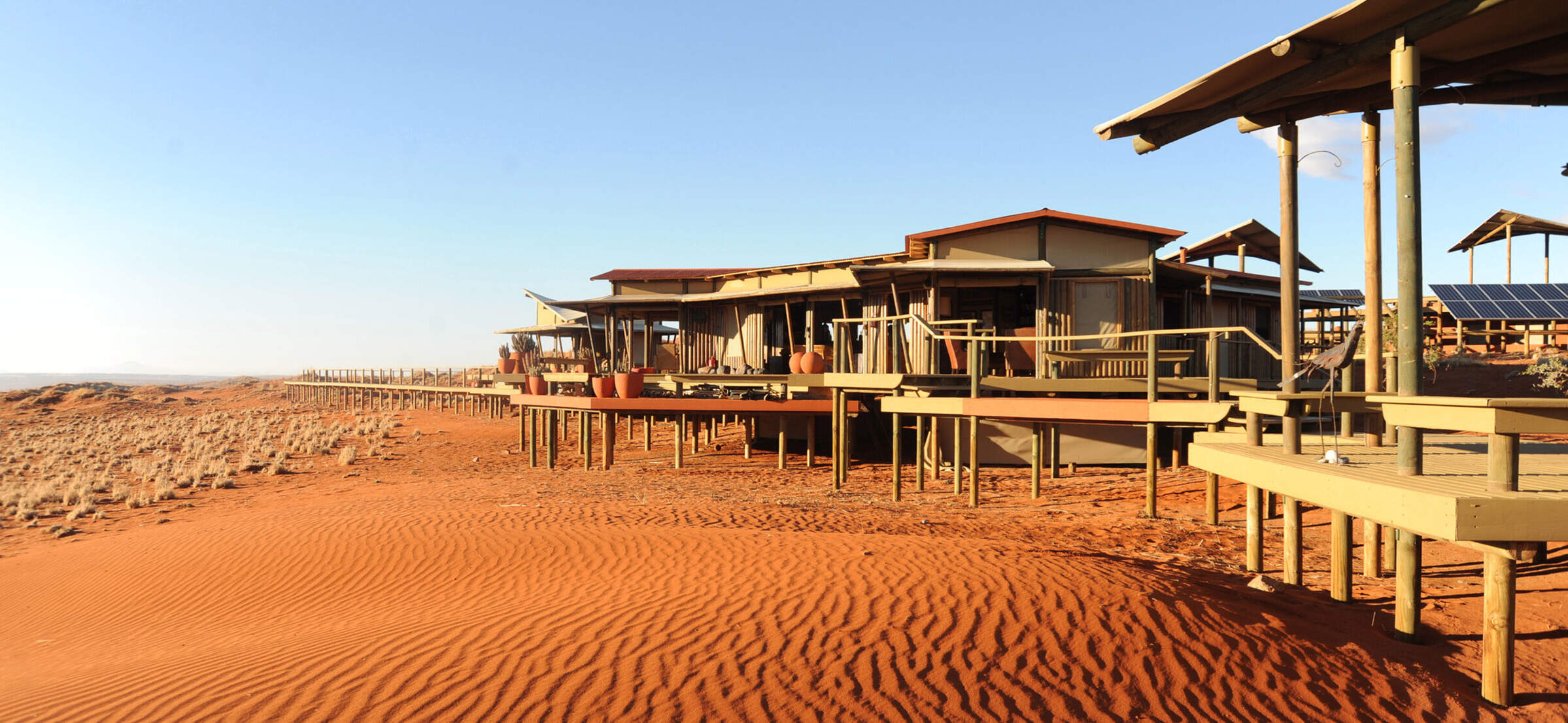
Wolwedans Desert Lodge
Wolwedans Desert Lodge is a beautiful camp in a stunning setting on the NamibRand Reserve. Stay here for a luxurious escape into the wilderness.
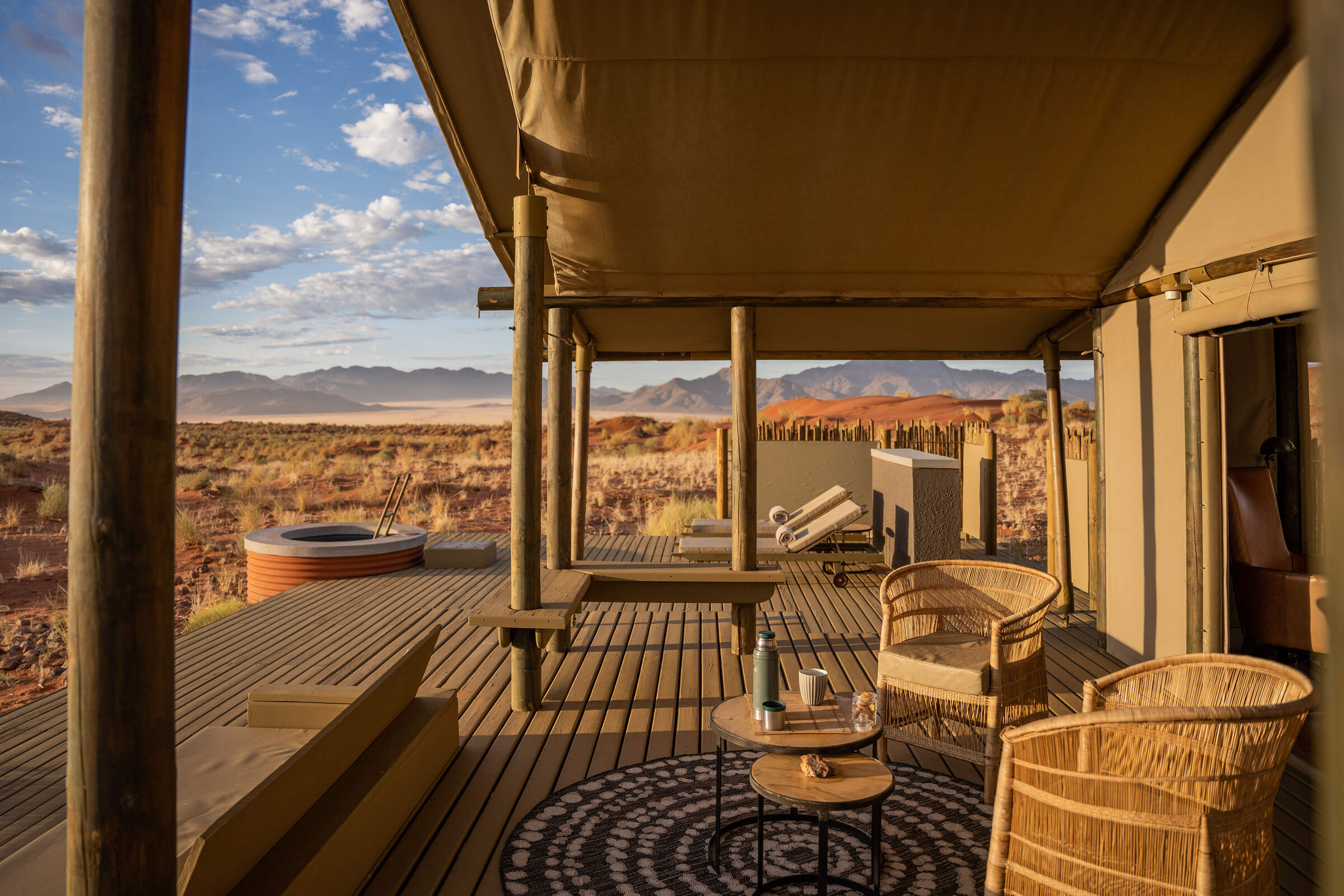
Wolwedans Dune Camp
Small and intimate with excellent service and great guiding, Wolwedans Dune Camp is a luxurious escape in a beautiful location.
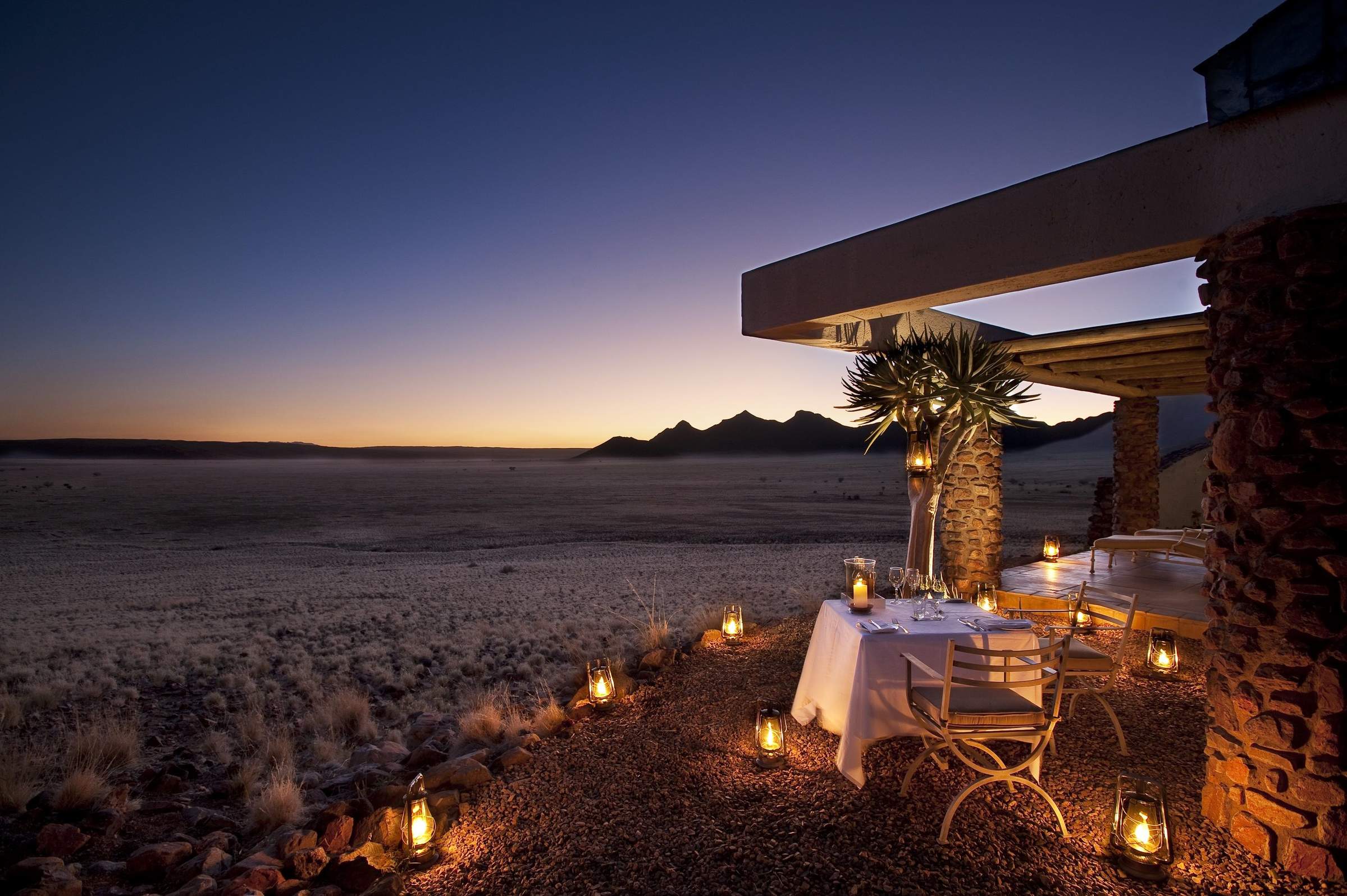
Sossusvlei Desert Lodge
Sossusvlei Desert Lodge is located on the NamibRand Reserve and offers a range of activities as well as high levels of comfort and service.
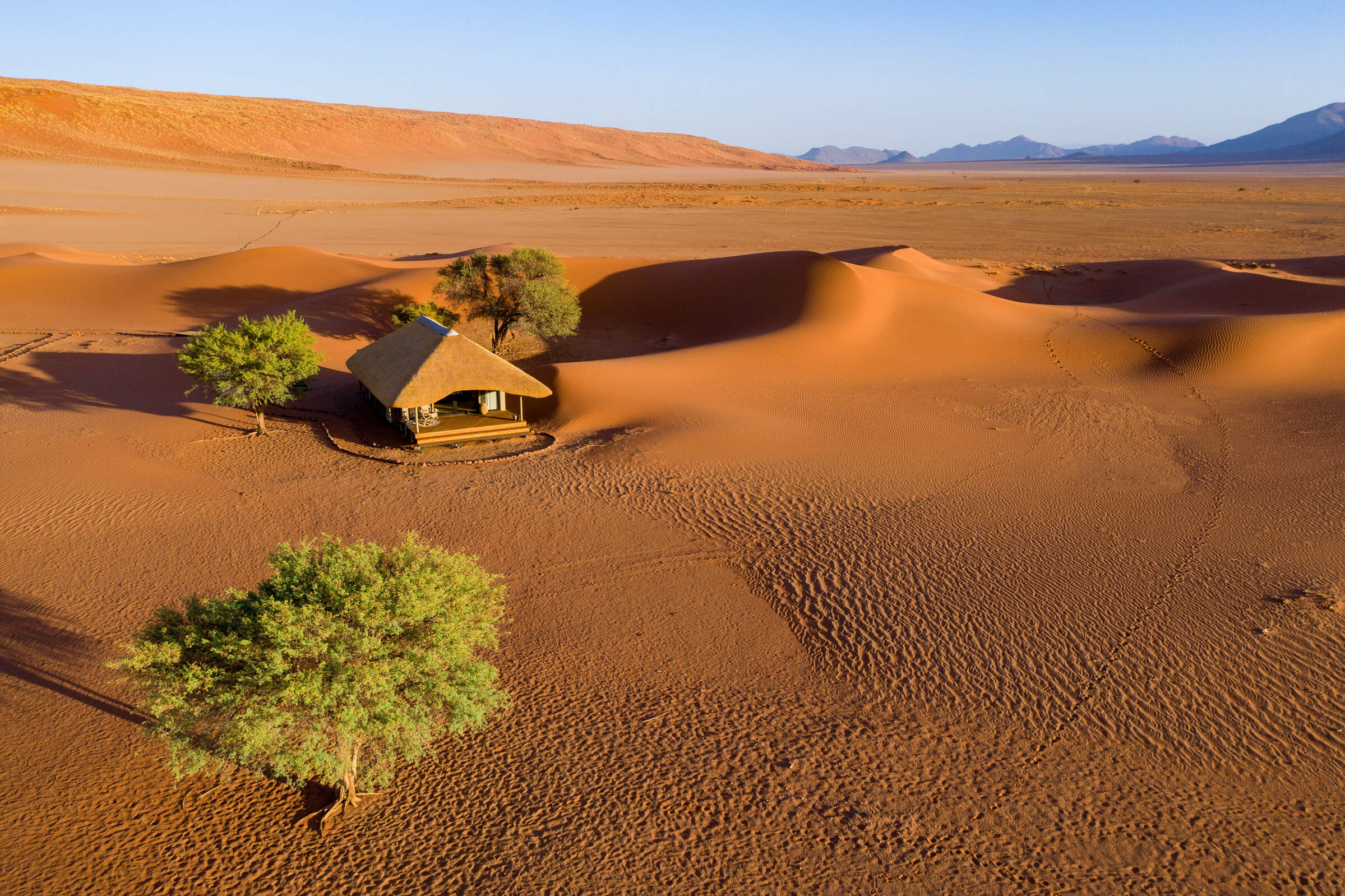
Kwessi Dunes
Kwessi Dune Lodge is a new property in the NamibRand Nature reserve promising to offer a luxurious stay in the wonderfully remote NamibRand Reserve.
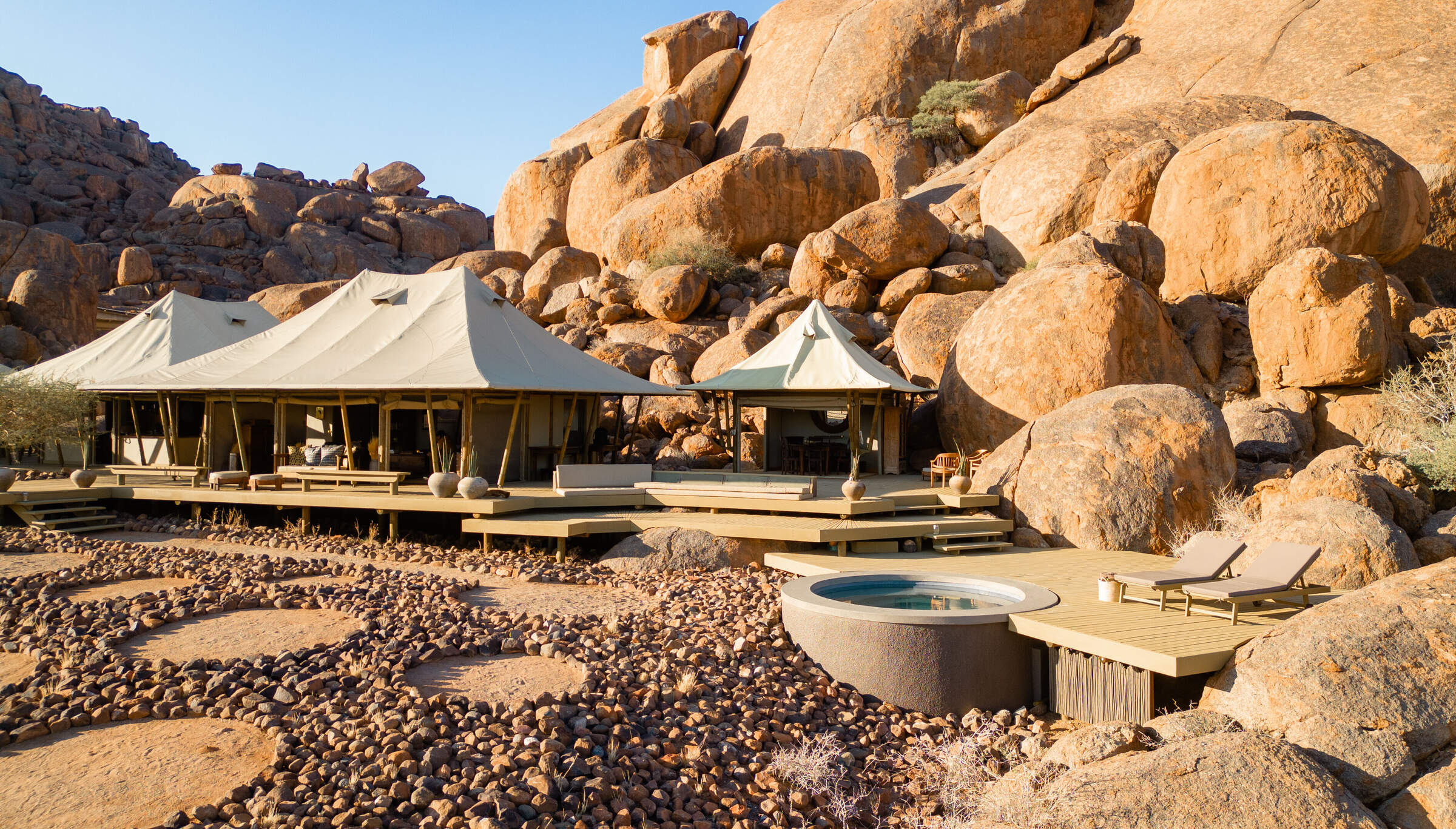
Wolwedans Boulders
Hidden away in a remote corner of the NamibRand enjoy good food and attentive service at the exclusive Wolwedans Boulders Camp.
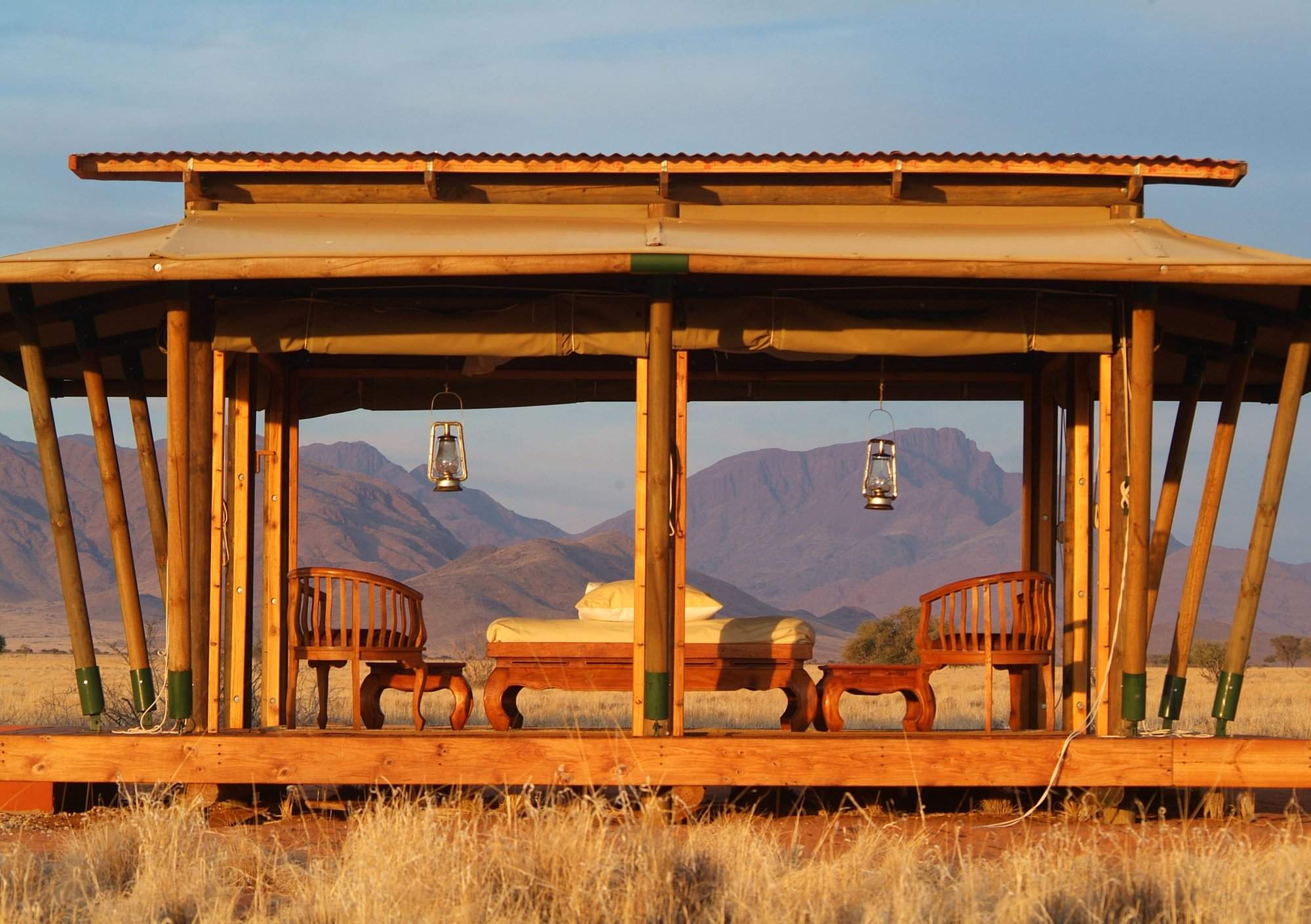
Wolwedans Plains Camp
With just three bedrooms, private chef and private guide, Wolwedans Plains Camp offers for peace and seclusion in a stunning setting.
When to go to NamibRand Nature Reserve
Our month by month guide: What it's like to visit Tok Tokkie Trails in NamibRand Nature Reserve
Jan
Feb
Mar
Apr
May
Jun
Jul
Aug
Sep
Oct
Nov
Dec
Namibia in January
January is at the heart of Namibia’s rainy season. However, as you’d expect from a country dominated by desert and semi-desert environments, the rains are often (but not always) weak and usually quite localised. Some days will be clear, the strong sun raising temperatures to around 30ºC/86ºF; on others humidity and clouds build, sometimes culminating in spectacular thunderstorms. In extreme cases, these generate flash-floods which race down the beds of ephemeral rivers.
Across the country, the greening landscape makes a refreshing change, especially in desert areas. Many birds are in full breeding plumage and migrant species are here in force. In the north, where the rains are more reliable, the abundant water and food allows wildlife to disperse, making it trickier to spot.
- Variable weather: clear, hot & dry, or cloudy & humid with some rain
- Occasional, highly localised thunderstorms
- Many animals with young; birdlife at its most spectacular
- Wildlife dispersed & harder to see, especially in Etosha & the Caprivi
- Very few tourists (apart from the New Year) so rates mostly low
Our view
This is not a great time to visit
Weather in January
Namibia in February
February is the wettest month, but as Namibia is dominated by deserts, the rains are often weak and patchy. The variation in weather across Namibia is significant, too; the central highlands and Caprivi can see some heavy rain. More typically, some February days are clear with a hot, strong sun; others are cooler as cloudy skies build and, sometimes, culminate in short, spectacular thunderstorms. Occasionally these generate flash-floods, bringing ephemeral rivers to life and making travel more challenging.
Across the country, the landscape feels green and alive; insects and smaller animals are more easily seen, and many birds and animals are raising their young. However, small pools in the bush and thicker vegetation can make it hard to spot the wildlife.
- Variable weather: clear, hot & dry or cloudy & humid with some rain
- Occasional localised thunderstorms meander over the landscape
- The bush feels alive; birdlife is at its most spectacular
- Wildlife in Etosha & Caprivi is dispersed & harder to see
- Few tourists, so rates usually at their lowest
Our view
This is not a great time to visit
Weather in February
Namibia in March
March usually sees Namibia’s main rains tailing off, although actual precipitation varies hugely across the country and can be unpredictable from day to day. Many days will be clear, with a strong sun driving temperatures up. On others, clouds will build, and the late afternoon may see a short, spectacular thunderstorm. Such deluges reduce in both frequency and volume as the month progresses.
Across the country, landscapes are often vivid: a “green and pleasant land”. Many birds and animals are finishing raising their young, so smaller animals and insects are in evidence. In the north, where rains are generally heavier, pools in the bush and thicker vegetation can make it difficult to spot larger animals.
- Variable weather: clear, hot & dry or cloudy & humid with some rain
- Afternoon thunderstorms less common as March progresses
- Animals looking sleek and well-fed, after 3–4 months of plenty
- Wildlife in Etosha & Caprivi is dispersed & harder to see
- Few tourists visit during March, so rates often low
Our view
A good time to visit, with pros & cons
Weather in March
Namibia in April
Typically, April is dominated by dry weather; there’s an ever-decreasing chance of rain. Temperatures are now below their peak and continue to fall. Even so, days remain pleasant and warm, but there might be a slight chill in the air at night. The rains usually leave many parts of the country verdant and green, so animals are in fantastic condition – often with fast-growing young in attendance.
With the dust washed out of the atmosphere, photographers make the most of clear air, spectacular landscapes and healthy animals. Stargazers will have clearer night skies as the month progresses. In the game parks of Northern Namibia, water and food remain in plentiful supply, so finding big game can prove trickier than later in the year.
- Becoming drier &, especially at night, also cooler
- Few visitors, except around Easter, so rates remain low
- Wildlife in Etosha & Caprivi remains relatively hard to see
- Migrant birds have started to leave
- Fresh, clean air and often green, verdant landscapes
Our view
A good time to visit, with pros & cons
Weather in April
Namibia in May
By May, Namibia is usually drying out fast as the rains have ended. If they’ve been good, then the land remains green, but wildlife starts to congregate at more permanent water sources. Over much of the country the air quality and clarity can be amazing, making this an ideal month for photography.
Typical days are warm, with crisp, clear mornings and clear blue skies. Evenings are usually cool, and temperatures may dip below 10ºC (50ºF) overnight. Many lodges still charge “low season” prices, although with Namibia’s increasing popularity in recent years, some have started to introduce higher “shoulder season” rates.
May’s good-value rates, increasingly good wildlife sightings, beautiful landscapes and crystal-clear air combine to make this one of our favourite months in Namibia.
- Lovely weather: dry, warm days & cool nights
- The country is drying out although many landscapes remain green
- Fantastic air clarity – ideal for keen photographers
- Visitor numbers are often still low, mirrored by lodge rates
- Wildlife is starting to congregate more around remaining water
Our view
A very good time to visit
Weather in May
Namibia in June
Namibia is dry again. Skies are blue and usually largely cloudless. Days are lovely: warm and dry; nights are cold, sometimes below freezing in the desert. Most swimming pools in Namibia are always outdoors, making them too cold for all except the very dedicated.
Take a warm hat and gloves for game drives, where dawn and dusk will feel particularly chilly. In the north, especially Etosha, wildlife viewing is now into its dry-season pattern, focusing around the waterholes – though the park is still not busy.
Photographers come for superb air clarity, with minimal dust or smoke in the air. Historically, June rates have been low. However, with Namibia’s increasing popularity many lodges now count it amongst their “high-season” months, and request higher prices.
- Clear, bright days with blue skies; cold nights, mornings & evenings
- Great air quality, especially welcome for photographers
- “Shoulder season” for some lodges: lodge rates moderate
- Wildlife gravitates to waterholes, making game-viewing productive
- Some greenery in the landscape, depending on the last rains
Our view
A very good time to visit
Weather in June
Namibia in July
Reliably warm daytime temperatures (upwards of 20ºC/70ºF) and good wildlife sightings make this a popular month to visit Namibia. Rain would be very unusual indeed and clear skies make for great photographs. Once the sun sets, though, temperatures cool rapidly bringing cold nights that may dip below freezing in the desert. Be prepared: dress in layers and expect early-morning and late-afternoon drives, and anywhere coastal, to be cold.
As the land dries and vegetation shrivels, game congregates beside drinking water: Etosha’s waterholes are busy with animals. Across the country, lodges charge “high season” rates; many are fully booked a year or more in advance, especially during European school holidays (from the latter half of July to late August).
- Dry days, warm in the sun, with crisp, cold nights
- Cloudless skies: July is usually superb for stargazing
- The beginning of European school holidays so more families travelling
- Peak season: so high rates and many lodges fully booked far in advance
- A fantastic time of year for wildlife watching, particularly in Etosha
Our view
A very good time to visit
Weather in July
Namibia in August
August is the height of Namibia’s “winter”. Expect cloudless skies and plenty of warm sun in the day, but nights down to freezing in the desert. Dress in layers and bring warm clothes (including hats and gloves) for chilly starts and evenings. Only the hardiest even contemplate using outdoor pools.
It’s 3–4 months since any rain, so the land is dust-dry and much vegetation is golden brown. Many landscapes appear sparse and harsh. Wildlife congregates around available water sources, helping to guarantee good animal sightings.
Namibia is never really “busy” by the standards of Europe or the USA, but August is the most popular time to visit, especially for families. Book early (over a year in advance) if you want to stay at the best lodges.
- Dry days, warm in the sun; cold mornings, evenings & nights
- Cloudless skies in the day; spectacular stars at night
- Busy by Namibian standards: family rooms in particular demand
- Peak season: so high rates and many lodges fully booked far in advance
- A fantastic time of year for wildlife watching, particularly in Etosha
Our view
Fantastic: the very best time to visit
Weather in August
Namibia in September
September is a month of blue, cloudless skies and fantastic wildlife viewing. Rain is almost unheard of. As the month progresses, the days and nights get warmer. In some areas, daily maximums hit around the low 30s Celsius, although low humidity ensures this feels comfortable. The contrast makes the nights seem very cold. The air is becoming dustier, occasionally augmented by smoke from fires – so becoming hazy for photographic purists.
In the national parks, animals congregate around remaining water sources – making September one of the best months for game viewing. Hence it’s one of Namibia’s most popular months for visitors: a “high season” month that is often the time of choice for safari aficionados.
- One of the best months for wildlife viewing
- Warm days & cold nights, with temperatures rising during the month
- Many plants have faded from green to golden brown
- Air can be hazy – with dust & sometimes smoke
- High season rates; many lodges & camps are full 9 months in advance.
Our view
Fantastic: the very best time to visit
Weather in September
Namibia in October
Namibia is usually at its hottest and driest in October. Temperatures build as the month progresses; towards the end, daily highs may exceed 40ºC/100ºF, though with humidity close to zero, even this rarely feels oppressive.
In exceptional years, isolated rain showers may fall in late October. More usually, the end of the dry season sees wildlife watching at its best, particularly in Etosha. The place feels like a desert as spectacular herds of thirsty animals gather around the available water. October is popular amongst wildlife enthusiasts and commands peak-season prices, even if dust and smoke may make the air hazy, challenging photographers. Visitor numbers can fade towards the end of the month, allowing a window for last-minute bookings.
- Probably the most spectacular month for wildlife-viewing in Etosha
- Hot and dry: much of the country feels like a desert
- The air can be hazy with dust & smoke
- It’s peak time to visit, so expect high season rates
- Lodges & camps are full, especially early in October
Our view
A very good time to visit
Weather in October
Namibia in November
November is always a bit unpredictable: sometimes dry and hot; sometimes cloudier and cooler. Typically, mornings are hot and cloudless and clouds appear in the afternoon. Humidity builds and eventually breaks, resulting in spectacular thunderstorms that bring convection rainfall in late afternoons. Such storms are typically sparsely distributed and highly local – being completely absent from desert areas, for example. Places that do get good rain will flush green, with a tangible feeling of new life softening the landscapes. Many mammals give birth to their young.
Once any rains come, wildlife dissipates in search of food, and game viewing in Etosha becomes harder. Conversely, this is a great time for birdwatchers, with migrant species in breeding plumage.
- A very interesting, variable month, depending on the rains
- With rains come an amazing explosion of both vegetation & new life
- Wildlife viewing better in Damaraland than Etosha if it has rained
- Shoulder season: mid-range rates offer great value
- Away from the Namib, showers are more likely later in the month
Our view
A good time to visit, with pros & cons
Weather in November
Namibia in December
December is the first “proper” month of Namibia’s rainy season, and one of its hottest. Clear mornings give way to building clouds and, with luck, the occasional short, spectacular thunderstorm: refreshing and cleansing. These are often highly localised and generally warmly welcomed: most Namibians love rain!
Rains clear the air of dust. Even relatively short showers enable plant life to erupt, carpeting this thirstland in green and providing food for the young animals which abound. Animals disperse widely, which can make game viewing challenging. Many birds are breeding and so sporting their most colourful plumage.
Christmas and the New Year fall within local “summer holidays” – so places to stay can be surprisingly busy, especially in and around coastal towns, where temperatures are cooler.
- Hot and humid; sometimes refreshed by cooling showers
- Landscapes flushed green if/where there has been rain
- A tangible life and energy amidst this often green & pleasant land
- Very photogenic: blooming deserts amidst crystal-clear air
- Best time for birdwatchers; larger animals harder to spot
Our view
This is not a great time to visit
Weather in December

Looking for inspiration on where to travel next?
Visit our trip chooser to explore your options and find inspiration for your perfect African adventure
Inspire me